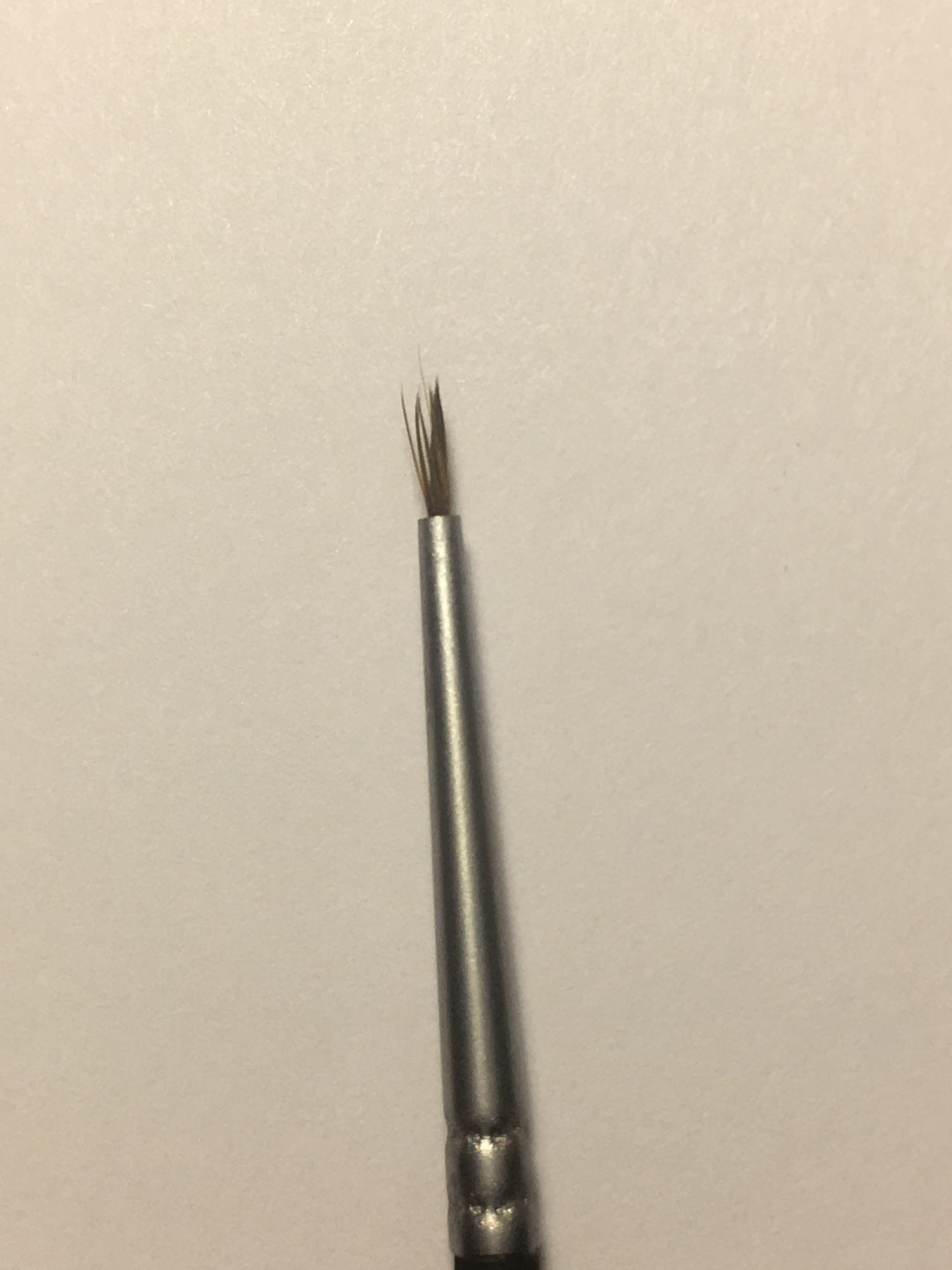Hello friends, it’s Mindy here. Have you ever had a paint brush get all frayed and frazzled? Well, I have and it’s pretty frustrating, particularly if the brush is quite new. Art supplies, especially good quality ones, can really add up so it’s a goal for most of us to make them last. I had just bought this wonderful brush about a week ago—on sale, of course—and I had only used it once. It’s a tiny brush and it’s meant for fine, intricate details and I just knew it was going to be perfect for some of the botanical paintings I had in mind to do. I was brimming with excitement about my newest brush. Sorry I don’t have a picture of it in all it’s sparkling brand new glory. I am precious about my supplies but not that precious.
Anyhow, on Saturday while Aspasia and I were in painting class she asked me where her favorite brush was. Interestingly she’d really developed a liking for an absolutely awful old brush that most people would probably have tossed ages ago, but she was doing amazing work with it so whatever works. We didn’t have it with us, so she asked if she could borrow my new detail brush. I asked her to please treat it gently. It wasn’t until we got home later and I was looking though our supplies that I noticed in horror the condition of that brand new brush. I didn’t get a picture of it when it was at its worst, but I kid you not, it looked like a dandelion seed...how the top is going in all directions. Folks, don’t trust your teenagers with your new or favorite brushes or at least not before making sure they know how to properly use and care for them.
My brush looked just like one of those dandelions seeds. :-(
I thought oh boy, I guess I will just have to buy another one but I was really irritated about it. Then I remembered hearing ages ago (and I have no idea if this is/was true) that brush manufacturers coat the brushes in egg white to preserve the shape until they reach the customer. I know they are definitely coated in some kind of stiffener and egg whites would qualify. I figured I might as well try coating the brush in egg white and reshaping it to see if it would improve. Luckily I had a few eggs in the fridge and decided to fry up an egg as a snack while I use the bit of white that remains in the shell to attempt to restore my brush. I brushed inside the eggshell and reshaped the brush with my finger and let it dry. It did improve quite a bit, but still was not quite where I needed it to be in order to use it as intended.
A little better. This was the brush after applying egg white and reshaping with my fingers and letting it dry. Not quite where I wanted it to be though.
So then I researched online to see if anyone else knew of any tricks. One Youtube video surfaced and the lady on the video seemed to have some success with dipping her frayed brushes in boiling hot water to reshape them. I figured it was worth a shot since I had access to water and a way to make it boil. ;-)
I boiled a small amount of water and dipped my brush in for a few seconds. When I pulled the brush out it still did not seem perfect. However, it was an improvement. I tried dipping in the water some more but it was about the same. Since my egg shells, still moist inside with egg white were right there handy, I dipped the brush in a glob of egg white and did not touch it but just let it dry. Once dry, the brush looked just about as good as new.
My brush after dipping in boiling hot water a couple of times and then dipping in egg white and letting it dry. Hooray!
The ultimate test was re-wetting and using it. So, when I got out my painting I made sure to test the refurbished brush and much to my satisfaction it performed very well and the shape held up.
So, if you have some brushes tucked away that have lost their shape, you might give this method a try before resigning the brushes for odd purposes or the trash. Although I tend to hang on to old yucky brushes since they can come in handy for the odd job here or there (one became my daughter’s favorite brush as I mentioned earlier) and if nothing else, the other end of the brush can come in handy for painting small dots and such.
You will need boiling hot water and a freshly cracked egg (for the residual egg white in the shell).
Here’s a recap of the basic steps:
Fry (or otherwise use) an egg, but keep the shell handy.
Boil a tea cup of water
Dip the frayed brush into the boiling water for about 3 seconds.
(You may want to smooth the bristles with your fingers a bit if it seems like the hairs are still a mess. You may then want to dip again in the boiling water for about 3 seconds.)Dip (and swirl slightly) the brush in the bit of egg white that remains inside the shell.
Do not touch the brush, but just let it sit undisturbed to dry. It doesn’t take too long to dry but I left mine alone overnight to give it plenty of time to retain the desired shape. Leaving it for longer might help it retain the shape better.
Hopefully you will discover a restored brush that you can use like you had intended. Or you could try repeating the steps if the brush improved but did not fully recover.
NOTE: This was process was used on a synthetic brush. I have personally not yet tried it on other types of brushes. If I have a damaged one in the future though—even if it’s a natural brush—I would not hesitate to try this.
UPDATE: I have since learned that you can also use gum arabic instead of egg whites if you have it in your art supply arsenal. One of the main reasons artists use gum arabic is to help control or limit the spread of wet-on-wet color when painting, so is definitely handy to have around. Some artists even coat their delicate brushes in some diluted strength of gum arabic on a regular basis when storing them to maintain the shape. If you want to give gum arabic a try for any of the purposes mentioned, I recommend this Winsor & Newton Gum Arabic.
Do you have a favorite method for restoring frayed brushes to their former glory? If so, leave your tips in the comments.




